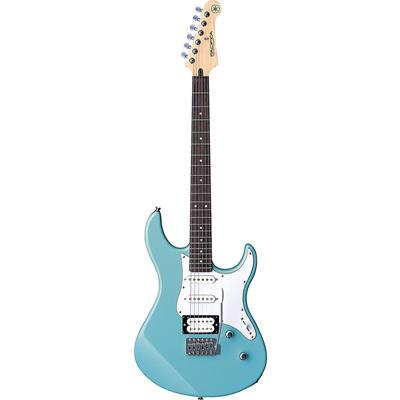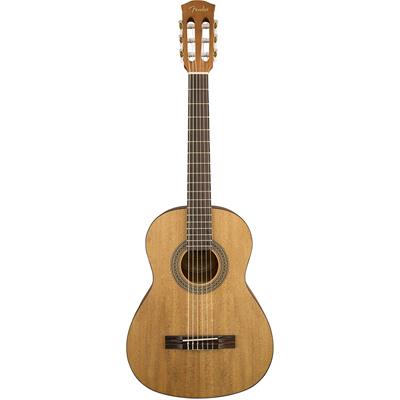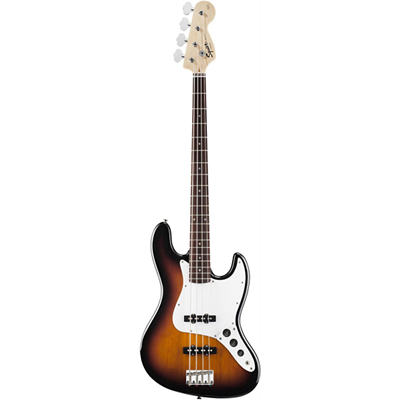The $500 price point represents the sweet spot in the electric guitar market—where quality meets affordability and where your investment truly pays dividends. In 2025, this budget range offers an incredible selection of instruments that would have cost double just a decade ago. Thanks to advances in manufacturing technology and increased competition between brands, you can now secure a professional-quality electric guitar that will serve you for years to come.
Whether you’re an intermediate player ready to upgrade from your starter guitar, a seasoned musician seeking a reliable backup, or a beginner willing to invest in quality from the start, this selection of sub-$500 electric guitars has never been more impressive. From versatile workhorses to genre-specific specialists, these instruments prove that exceptional tone and playability don’t require breaking the bank.
What’s The Best Electric Guitar Under 500
| Image | Guitar Model | ||
|---|---|---|---|
 | PRS SE CE 24 Standard Satin |  (4.9 / 5) (4.9 / 5) | Check on Amazon |
 | Yamaha Pacifica PAC112V |  (4.8 / 5) (4.8 / 5) | Check on Amazon |
 | Schecter OMEN-6 |  (4.8 / 5) (4.8 / 5) | Check on Amazon |
 | Squier Classic Vibe '60s Jazzmaster |  (4.8 / 5) (4.8 / 5) | Check on Amazon |
 | Squier by Fender Classic Vibe 60's Stratocaster |  (4.7 / 5) (4.7 / 5) | Check on Amazon |
 | ESP LTD EC-256FM |  (4.6 / 5) (4.6 / 5) | Check on Amazon |
 | Ibanez RG421AHM |  (4.6 / 5) (4.6 / 5) | Check on Amazon |
 | Squier by Fender Paranormal Esquire Deluxe |  (4.7 / 5) (4.7 / 5) | Check on Amazon |
Our Top Pick: PRS SE CE 24 Standard Satin
| Build Quality: |  |
| Hardware: |  |
| Electronics: |  |
| Sound: |  |
| Value: |  |
| Average: |  |

The PRS SE CE 24 Standard Satin represents exceptional value in the sub-$500 market, delivering build quality and versatility that punches well above its price point. This guitar exemplifies why PRS has become synonymous with quality craftsmanship at every price level.
The SE CE 24 Standard features a mahogany body that provides excellent sustain and warmth, while the bolt-on maple neck ensures bright attack and clarity. The 24-fret rosewood fingerboard offers smooth playability across the entire range, and the PRS-designed tremolo system provides stable tuning with moderate use.
What truly sets this guitar apart is its pickup system—the 85/15 “S” humbuckers with coil-split functionality essentially give you four different pickup voices in one instrument.
Pros:
✅ Exceptional versatility
✅ Outstanding build quality
✅ Comfortable “wide-thin” neck profile
Cons:
❌ Limited color options
Best for Beginners: Yamaha Pacifica 112V
| Build Quality: |  |
| Hardware: |  |
| Electronics: |  |
| Sound: |  |
| Value: |  |
| Average: |  |

The Yamaha Pacifica 112V has earned legendary status among guitar educators and students alike. This HSS configuration guitar offers the perfect introduction to electric guitar while providing enough quality and versatility to remain useful as your skills develop.
The Pacifica 112V features an alder body that provides balanced tone across all frequencies, while the bolt-on maple neck with rosewood fingerboard offers smooth playability. The Alnico V pickups deliver authentic vintage tones, and the vintage-style tremolo bridge adds expressive possibilities without sacrificing tuning stability.
This guitar’s reputation for reliability makes it an excellent choice for students and working musicians alike.
Pros:
✅ HSS pickup versatility
✅ Exceptional value for money
✅ Beginner-friendly features
Cons:
❌ Conservative aesthetics
Best for Metal: Schecter Omen-6
| Build Quality: |  |
| Hardware: |  |
| Electronics: |  |
| Sound: |  |
| Value: |  |
| Average: |  |

For players focused on heavier styles, the Schecter Demon-6 delivers the aggressive tones and fast playability that metal and hard rock demand. This instrument proves that you don’t need to spend a fortune to achieve professional-level metal tones.
The Demon-6 features a basswood body that provides good sustain without excessive weight, making it comfortable for extended playing sessions. The 24-fret rosewood fingerboard with dot inlays offers excellent upper-fret access for solos, while the adjustable bridge allows for precise intonation.
The active electronics require a 9V battery but provide noise-free operation and consistent output levels that work beautifully with high-gain amplification.
Pros:
✅ High-output active pickups
✅ Lightning-fast neck
✅ Rock-solid tuning stability
Cons:
❌ Limited clean tone versatility
Best Offset Guitar: Squier Classic Vibe ’60s Jazzmaster
| Build Quality: |  |
| Hardware: |  |
| Electronics: |  |
| Sound: |  |
| Value: |  |
| Average: |  |

The offset guitar renaissance has made the Jazzmaster more popular than ever, and the Squier Classic Vibe ’60s Jazzmaster offers an authentic entry point into this unique family of instruments. Its distinctive tone and playing feel set it apart from conventional guitar designs. Personally I think this guitar just exudes coolness and bang for buck.
The Classic Vibe ’60s Jazzmaster features a basswood body that provides balanced tone, while the maple neck with Indian laurel fingerboard offers smooth playability.
The 24-inch scale length creates a different string tension feel that some players prefer, and the switching system provides instant access to both bright lead tones and darker rhythm sounds.
Pros:
✅ Unique Jazzmaster tone
✅ Comfortable offset design
✅ Vintage-accurate style
Cons:
❌ Tremolo adjustment complexity
Most Versatile: Squier by Fender Classic Vibe 60’s Stratocaster

Squier by Fender Classic Vibe 60’s Stratocaster delivers that special sixties vibes without a doubt. It has some new elements as well, so seems like modern and vintage styles have collided in this edition of the Stratocaster family.
It comes in four different colors: 2 color sunburst, 3 color sunburst, Sherwood green metallic, and burgundy mist. The instrument has an alder body, rosewood fingerboard, and vintage-tint gloss maple neck with 21 medium jumbo frets. This guitar is light and comfortable. Its sound is amazing, thick, and powerful. It holds in tune very nicely. It is not too light but not heavy as well.
This guitar will leave you surprised with its high quality and good tone, especially if you keep in mind the price.
Pros:
✅ Ultimate tonal versatility
✅ Great build quaility & sound
✅ Classic vintage style
Cons:
❌ Tremolo setup complexity
Best Classic Rock Choice: ESP LTD EC-256FM
| Build Quality: |  |
| Hardware: |  |
| Electronics: |  |
| Sound: |  |
| Value: |  |
| Average: |  |

For players seeking authentic Les Paul style tone and feel, the ESP LTD EC-256FM delivers the goods at a fraction of the cost of its Gibson counterpart. This guitar captures the essence of the classic Les Paul design while incorporating modern reliability, and you really feel like you are getting your moneys worth when you see this beautiful guitar.
The ESP features a mahogany body with maple cap, providing the classic Les Paul tonal foundation. The mahogany set neck with rosewood fingerboard offers smooth playability and enhanced sustain, while the tune-o-matic bridge and stopbar tailpiece ensure excellent intonation and string coupling. The vintage-style tuners and chrome hardware complete the authentic Les Paul aesthetic.
Pros:
✅ Authentic Les Paul style tone
✅ Premium feel and quality
✅ Excellent sustain and resonance
Cons:
❌ Can be a bit on the heavy side for some
Best Modern Player: Ibanez RG421AHM
| Build Quality: |  |
| Hardware: |  |
| Electronics: |  |
| Sound: |  |
| Value: |  |
| Average: |  |

The Ibanez RG421AHM represents the modern evolution of the electric guitar, designed for players who demand speed, comfort, and contemporary tones. This instrument excels in progressive rock, metal, and fusion applications.
The RG421AHM features an ash body that provides bright attack and excellent sustain, while the bolt-on maple/walnut neck offers stability and bright tone. The jatoba fingerboard with jumbo frets facilitates rapid playing and aggressive bending techniques.
The fixed bridge design maximizes sustain and tuning stability, making this guitar ideal for alternate tunings and heavy playing.
Pros:
✅ Wizard III neck profile
✅ Premium aesthetic
✅ Versatile humbucker pickups
Cons:
❌ Modern style may not suit all tastes
Best Budget Powerhouse: Squier by Fender Paranormal Esquire Deluxe
| Build Quality: |  |
| Hardware: |  |
| Electronics: |  |
| Sound: |  |
| Value: |  |
| Average: |  |

The Paranormal Esquire Deluxe is Squier’s brilliant take on the classic single-pickup Esquire design, but with a modern twist that’ll make you rethink everything you know about minimalist guitars. This isn’t your grandpa’s stripped-down Tele – it’s a tone machine disguised as a simple single-pickup guitar.
This guitar proves that sometimes less really is more.
The pine body resonates beautifully, and that maple neck feels like butter under your fingers. It’s weird, wonderful, and totally addictive.
Pros:
✅ Surprisingly versatile P90 pickup
✅ Unique switching system
✅ Vintage-meets-modern aesthetics
Cons:
❌ Single pickup limitation
Build Quality Indicators
At the $500 price point, you should expect properly finished fret ends, accurate intonation, and reliable hardware. Quality control has improved dramatically across all major manufacturers, meaning you’re less likely to encounter the setup issues that plagued budget guitars in the past.
Pickup Quality
Modern pickup technology means even budget instruments can deliver professional-quality tones. Look for guitars with branded pickups or well-regarded house-brand options. Many guitars in this price range feature pickups that would have been considered premium just a few years ago.
Neck Comfort and Playability
The neck is where you’ll spend most of your time, so comfort is crucial. Consider your hand size and playing style when choosing between different neck profiles. A comfortable neck will encourage you to play more, accelerating your progress and enjoyment.
Hardware Reliability
Quality tuning machines, bridges, and electronics are essential for a positive playing experience. The guitars in this guide all feature hardware that will provide years of reliable service with proper care and maintenance.
Frequently Asked Questions
Can I gig with a $500 guitar?
Absolutely. Many professional musicians use sub-$500 guitars for touring and recording. These instruments offer excellent value and reduce the risk of damage to more expensive guitars during travel. With a proper setup and quality amplification, these guitars can deliver professional results.
Should I buy new or used at this price point?
New guitars in this price range offer warranties, consistent quality control, and the latest manufacturing improvements. While used guitars can offer value, the quality improvements in modern budget guitars often make new instruments the better choice.
What accessories do I need?
A good practice amplifier, quality instrument cable, guitar strap, picks, and a tuner are essential. Many of these guitars benefit from a professional setup ($50-75), which can significantly improve playability and intonation.
How do these compare to more expensive guitars?
While more expensive guitars may offer premium woods, electronics, and appointments, the guitars in this guide provide excellent playability and tone that will satisfy most players. The law of diminishing returns means spending double often doesn’t deliver double the performance.
Conclusion
The sub-$500 electric guitar market in 2025 offers exceptional value across all musical styles and player levels. Whether you choose the versatile PRS SE CE 24, the reliable Yamaha Pacifica, or the powerful Schecter Demon-6, you’re getting an instrument that can serve you well for years to come.
Remember that any guitar benefits from a professional setup, which can transform a good instrument into a great playing experience. Pair your new guitar with quality amplification and you’ll have everything needed to explore your musical potential without breaking the bank.
The guitars reviewed here represent the best that Amazon has to offer in the sub-$500 category, each excelling in different areas while providing the quality and reliability that modern players demand. Your choice should ultimately depend on your musical style, aesthetic preferences, and specific playing needs—but you can’t go wrong with any of these exceptional instruments.






